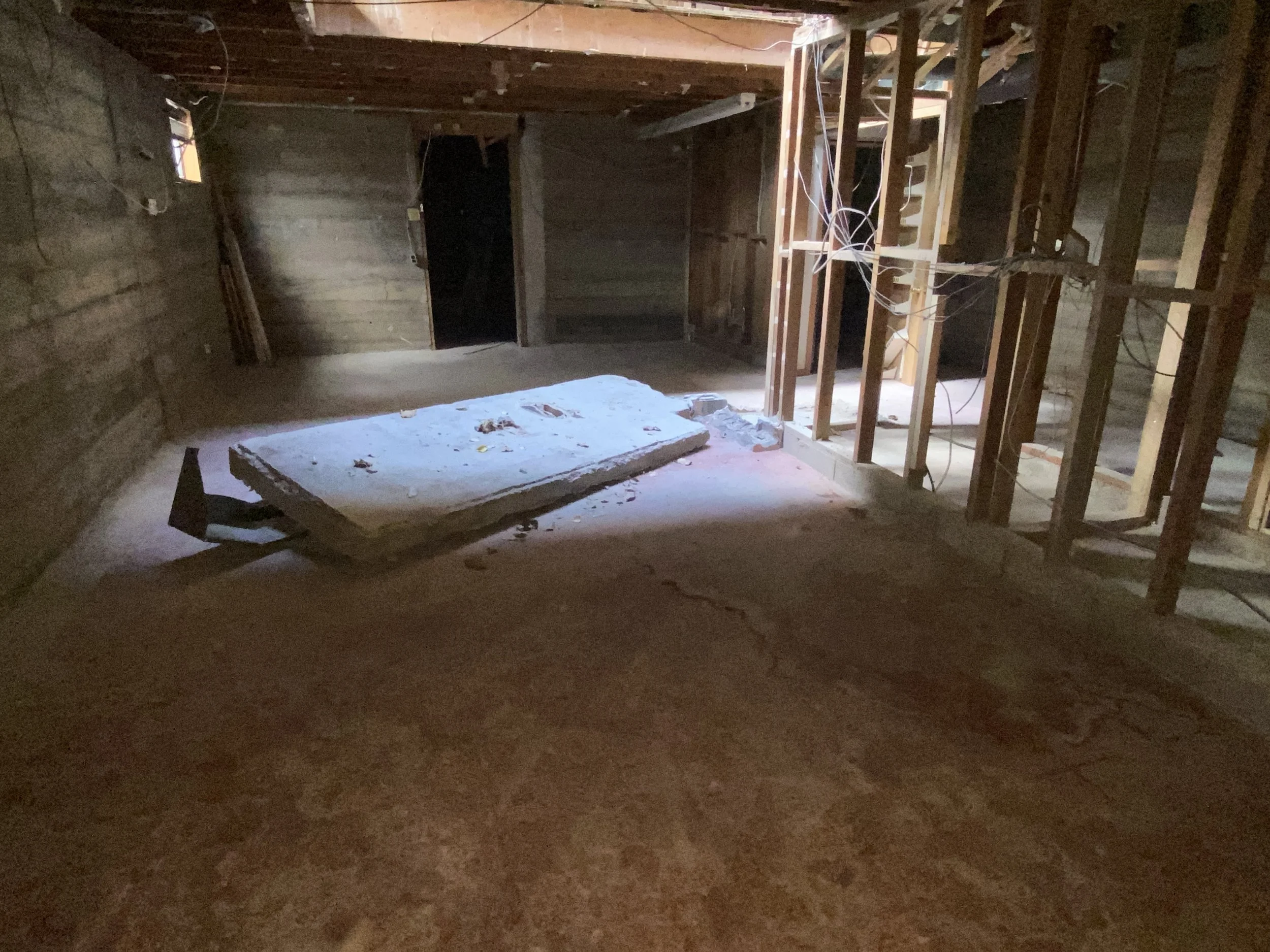Basements are an extremely common feature in Colorado homes due to the region’s expansive soils and the need for additional living space. While basements provide valuable square footage and extra protection against the elements, they also introduce unique structural challenges. In this installment of our series, we’ll explore common basement foundation types, potential defects, and how to determine when foundation issues require further evaluation.
Basement Foundation Construction
Basements are typically constructed with one of three main foundation types:
Poured Concrete Walls – This is the most common basement foundation system in modern construction. Concrete is poured into forms to create a seamless, monolithic wall that resists water intrusion and structural shifting.
Concrete Masonry Units (CMU) or Block Foundations – Older homes or cost-effective builds may use concrete blocks stacked and mortared to form the foundation walls. While durable, CMU walls are more prone to lateral movement and moisture penetration if not properly reinforced.
Brick or Stone Foundations – Found in historic homes, these foundations are constructed from stacked stone or brick and mortar. They are highly susceptible to moisture intrusion and deterioration over time due to the porous nature of the materials.
Basements may be full-depth (extending below the frost line) or partial-depth (daylight basements with some above-grade exposure). The surrounding soil type, drainage, and construction quality all influence how well a basement foundation holds up over time.
Common Basement Foundation Issues
Due to Colorado’s expansive soils, basement foundations are particularly susceptible to movement and cracking. Some of the most common issues include:
1. Vertical and Horizontal Cracking
Vertical Cracks – Often caused by normal shrinkage or settlement, these cracks are typically less concerning unless they widen over time.
Horizontal Cracks – More problematic, horizontal cracks can indicate lateral pressure from soil expansion, potentially leading to bowing walls and structural failure.
Diagonal Cracks – These can range from minor to major issues depending on where the diagonal cracking is occurring. Radial cracks originating from openings in the foundation wall such as a window can just indicate stress cracking from settling, whereas large diagonal cracks running the span of the foundation wall can indicate differential settlement.
Stair-Step Cracks – Common in CMU or brick foundations, these cracks may signal differential settlement or lateral movement.
2. Bowing or Leaning Walls
Excessive hydrostatic pressure from water-saturated or expansive soils can cause foundation walls to bow inward. This issue is more common in CMU or block foundations and often requires reinforcement with carbon fiber straps, wall anchors, or steel beams to prevent further movement.
3. Water Intrusion and Efflorescence
Colorado’s clay-heavy soils retain water, which can lead to moisture seepage through foundation walls. Symptoms include:
Damp walls or floors
White, chalky residue (efflorescence) from mineral deposits
Mold or mildew growth
Proper exterior grading and drainage, sump pumps, and waterproofing membranes can help mitigate moisture issues.
4. Differential Settlement
When soil expands and contracts unevenly, portions of the foundation may settle at different rates. Signs of differential settlement include:
Sloping floors
Gaps around doors and windows
Diagonal cracks in drywall or masonry
If left unaddressed, significant settlement can lead to structural instability requiring underpinning or foundation reinforcement.
How to Prevent and Address Basement Foundation Issues
While foundation movement is common in Colorado, proactive maintenance can help mitigate potential damage:
Manage Drainage – Ensure gutters, downspouts, and grading direct water away from the foundation to prevent soil expansion and hydrostatic pressure buildup. Keeping water draining away from the foundation is priority #1.
Monitor Cracks – Small cracks should be sealed to prevent moisture intrusion, while widening or shifting cracks should be evaluated by a structural professional.
Install Sump Pumps and Drainage Systems – Homes with chronic moisture issues may benefit from interior drain tile systems and sump pumps to manage water infiltration.
Reinforce Walls as Needed – If bowing or lateral movement is detected, reinforcement methods such as wall anchors or carbon fiber strips may be necessary.
When to Consult a Professional
Not all cracks or basement issues require major repairs, but certain signs warrant professional evaluation. If you notice:
Large or widening cracks (greater than 1/4 inch)
Significant bowing or leaning walls
Persistent water intrusion despite proper drainage efforts
Uneven settling leading to major structural shifts
… it’s best to consult a structural engineer or foundation specialist for an assessment.
Final Thoughts
Basement foundations are an integral part of many Colorado homes, offering valuable living space while also posing unique structural challenges. Understanding the effects of expansive soils and taking proactive measures to manage drainage and monitor movement can help homeowners maintain a stable foundation. In the next and final installment of this series, we’ll explore crawl space foundations and their unique considerations in Colorado’s diverse soil conditions.
Stay tuned for Part 3!
If you are in need of a professional opinion regarding a concrete slab or foundation, check out our Preferred Trade Partners & Professionals List.

